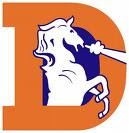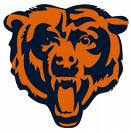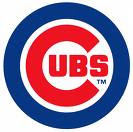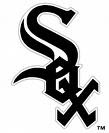 steroids topic in baseball goes...I don't care.
steroids topic in baseball goes...I don't care.I watched many baseball games during the mid 90's to present day, and I didn't feel ripped off by the inflated stats. I realized back in the day that something was fishy, but I loved seeing the long ball leave the yard. After all...chicks dig the long ball.
For me the Steroids Era was just another time line in baseball history. I don't think anyone has had that "unfair" advantage over the next. Sure some people used them a little more, but it seems that every week someone's name pops up and is linked to the roids some
 way. Whether it is the super secret list of 104 MLB that tested positive during the 2003 test or the Mitchell Report has pointed them out it seems that the playing field was really made up of roid-using cheaters. Release All The Names!
way. Whether it is the super secret list of 104 MLB that tested positive during the 2003 test or the Mitchell Report has pointed them out it seems that the playing field was really made up of roid-using cheaters. Release All The Names!I don't care who really used them. In my opinion they all did. If everyone (or majority of them) were using them, then it's not really an unfair advantage now is it? It was just the hitters "juicing up", but pitchers were doing it also. From the big name studs to the little no name relievers, the steroid roots led everywhere.
I know people will bicker and moan about their favorite player who is in their opinion "clean", but I'm not going to give passes to people without any evidence. I'll just consider them all users. It's not fair, but it's better than pointing the finger at one while the other sneakier person gets away with it.
Nothing has ever been proved on how steroids makes a baseball player have that extra advantage over the other. Big Mac is correct when he says that you still need hand-eye coordination to hit the ball and as far as I know being "stronger" doesn't make that happen.
Picking on the Weak
The inflated HR numbers can also be attributed to a couple other factors in baseball. First of all, there was a four team expansion in baseball during that period. Could the numbers be inflated due to bad "thinned" out expansion pitching staffs?
Look at the Rox pitching staff during the first ten years of existence. They flat out
 had A LOT of bad pitchers. They dug up a lot of bad pitchers out of the grave to have them pitch. The opening day starter at Mile High was Bryn Smith. He was a 38 year old corpse they rolled up to the mound to get any innings out of. Surprisingly he wasn't such a bad inning eater for them during their expansion year.
had A LOT of bad pitchers. They dug up a lot of bad pitchers out of the grave to have them pitch. The opening day starter at Mile High was Bryn Smith. He was a 38 year old corpse they rolled up to the mound to get any innings out of. Surprisingly he wasn't such a bad inning eater for them during their expansion year.The expansion Rox sent 25 different pitchers to the hill to try and get a batter out during their first season. Ultimately they gave up a total of 181 HR's to opposing batters that season. In a strike shorten season the following year they had 18 different pitchers give up 120 HR's. In 1995, 20 pitchers gave up 160 HR's.
The expansion Marlins sent out 18 pitchers their first year including 45 year old Charlie Hough, to give up a 135 HR's in 1993. In 1994 the fish dished out 20 pitchers to give up 120 HR's. In 1995, 27 pitchers for 139 HR's.
Once again in 1998 baseball faced expansion as the Arizona Diamondbacks and Tampa Bay Devil Rays joined the ranks of a league already pitching thinned out from the previous expansion.
The expansion Diamondbacks faired no better than the Rox or Marlins as they sent out 25 different pitchers to give up 188 HR's to opposing batters. The D-Rays put out 22 pitchers to give up 181 HR's.
The patterns between the four expansion teams are similar until the clubs established their own minor league farm systems. Poor pitching was sent out to eat up innings as the expansion teams weathered their early rough starts. A few balls left the parks during those times. There's one possible reason for inflated numbers.
Throw the Ball Out of the Park
A second factor could be the wave of new hitter friendly ball parks. Once upon a time ago, Wrigley Field was the smallest and easiest ball park for HR's...especially when the wind would blow out. Now a days almost all the ball parks are good hitter parks, there are just a hand full that are pitcher friendly (SD, Detroit).
Ball parks built this year are guilty of having short porches for the hitters. About fifteen years ago the media on the east coast were killing Coors Field for being hitter friendly. They made the place sound like a disgrace to baseball. But now that the new Yankee Stadium has turned into a launching pad of HR's due to even smaller dimensions, the media turns their cheek the other way and enjoy the astonishing numbers. What kind of B.S. is that?
They (the media and such) complained that the ball travels quicker and Coors Field should have bigger dimensions or some big wall out there to cut down on HR's. The measurement down the
 left field line in Coors Field is 347 ft from home plate. That is the second farthest distance only behind...Wrigley's 355 ft LF line. Fenway Park boasts the league low at 310 ft and the new Yankee stadium has a 318 ft LF porch (4th lowest).
left field line in Coors Field is 347 ft from home plate. That is the second farthest distance only behind...Wrigley's 355 ft LF line. Fenway Park boasts the league low at 310 ft and the new Yankee stadium has a 318 ft LF porch (4th lowest).The distance of the RF line in Coors Field is 350 ft, once again only second behind...Wrigley's 353 ft. Fenway Park leads the way in smallest distance at 302 ft while the new Yankee Stadium moves up a notch to #3 with a 314 ft RF porch.
Straight dead ahead to CF is a 415 ft shot at Coors Field which ranks third longest in baseball. The shortest...390 ft...at Fenway. The 400 ft mark seems to be the baseball favorite (or average) as ten parks holds that mark. To be fair, the Yankees have a 408 ft mark to CF which is still less than that softball number producing park in Colorado.
Is it a coincidence that the two teams with the most titles over the past fifteen years has the smallest ball park dimensions?
As you can see over that span baseball parks around the league got smaller, but that couldn't have factored into the increase in power numbers...it was all steroids.
A Technology Driven World
A third possible factor in the increase of numbers could be the use of new technology. There was a time when Hall of Famer Tony Gwynn was considered insane for watching hours and hours of video tape on opposing pitchers. Gwynn was the first one to use video evidence to his advantage. Now it's a common practice amongst teams.
Video tape is used in all aspects of the game. It's used to correct batting stances
 to help get out of "funks". Video tape is also a major part in scouting. Hours and hours of tape reveals pitchers and hitters tendencies, and weaknesses. Would a hitter benefit from this inside information? To quote a famous recent VP Candidate..."You betcha!"
to help get out of "funks". Video tape is also a major part in scouting. Hours and hours of tape reveals pitchers and hitters tendencies, and weaknesses. Would a hitter benefit from this inside information? To quote a famous recent VP Candidate..."You betcha!"Is it a fair advantage when a player knows the other players weakness? Unfortunately it's not even a debate. That's just part of the game now. If the hitter knows what pitch to look for or "lay off" of that just benefits him. Once again that probably never led to any HR's because steroids are still the culprit behind HR's.
Staying on the topic of technology, how 'bout the advances in equipment? Every player has his arsenal of personalized bats...longer, lighter, or heavier whatever the player preference is, they have a bat for it. Moving off the playing field baseball has advanced in other ways to help the batter.
Many ball parks have a hitting cage just right outside the dugout so a player can take a few swings before coming up to the plate. That's just another advantage to the hitter.
Another way is the many, many devices used for a hitter to work on their
 swings. We've all seen the commercials of so and so endorsing his Ultimate Hitting Machine or something along the way. Hitting devices that has baseballs bungeed to it so the person never has to chase the ball. Not every hitter has one, but there are many, many devices out there like it to improve hitting techniques or just simply cut down in the time chasing a ball down and give that extra time back to the hitter to work on his thing.
swings. We've all seen the commercials of so and so endorsing his Ultimate Hitting Machine or something along the way. Hitting devices that has baseballs bungeed to it so the person never has to chase the ball. Not every hitter has one, but there are many, many devices out there like it to improve hitting techniques or just simply cut down in the time chasing a ball down and give that extra time back to the hitter to work on his thing.A Better Athlete
A fourth factor that could be the driving force behind the increase of HR's is the player turned athlete. Steroids or not...today's player on any sport field is just a plain better athlete of the one's of yesterday. I look back at baseball cards of guys who played during the 60's, 70's, 80's and
 early 90's and I just say to myself, "Wow, there's a lot of overweight, out of shape looking dudes."
early 90's and I just say to myself, "Wow, there's a lot of overweight, out of shape looking dudes."It seems like the 70's and 80's were made up of a bunch of dudes who would have fit into your dad's summer softball beer league. I could picture most of them poppin' open a PBR after a game and B.S.-ing on the tailgate of the truck. The majority of the athletes didn't really look like the guys on rosters today.
Scroll up and down a locker room in today's league and you're going to find a lot of chiseled and sculpted looking guys who are stronger, and can run faster than anyone back then
 . Today's athletes take their bodies seriously nowadays (with an exception of a few...I'm talking to you Prince Fielder). The job is year round now.
. Today's athletes take their bodies seriously nowadays (with an exception of a few...I'm talking to you Prince Fielder). The job is year round now.Baseball, football, basketball, etc., etc. seasons never end. Baseball starts in February (reporting to training camp) and season ends in late October sometimes November. There's fall leagues in place around the world for the player that needs the extra work load to perfect his game and avoid getting out of shape.
Final Thoughts
I know there are many more factors that I might not have thought of or
 touched base with, but I don't think steroids alone have been the sole reason for the increase in statistics.
touched base with, but I don't think steroids alone have been the sole reason for the increase in statistics.Baseball would be dumb to put an asterisk by the Steroid Era. Every era faces it's own unique challenges during the time. Some eras favor pitchers and some favor hitters, but it's not fair to condemn this era. Not everything has been proven and probably never will be.
Today's players might have benefited from a statistical and money advantage over previous players, but could the heroes of yester-year stand up to some of today's pressures? Would Roger Maris handled the media pressure during the 61 HR year? The constant media spot light probably would have prevented a lot of records from being achieved.
Would Babe Ruth hit as many HR's as he did if he had to face relief pitching instead of the rag-armed starter? Go one step further and throw in the "specialty left handed pitcher" designed to get one out. I think Babe would have seen a few of those if he had played today.
One factor which would be hard to speculate on is the African American movement into baseball. Are all the records before Jackie Robinson's day in history tainted because they were only achieved by a league of all white guys? Some people would bite off my head for that statement, but I think it's a fair question.
Many factors go into a baseball era. It's fun to debate how a player would match up against the talent of another era. I don't hold any era to be less than another.
 Players show up on the field and face the current situations that are presented before them.
Players show up on the field and face the current situations that are presented before them.Baseball purist will argue to their grave that the Steroid Era tainted the game, but that same era also saved the game after the strike. Be honest with yourself and ponder the thought...did you like seeing the ball leave the yard during that era?








No comments:
Post a Comment